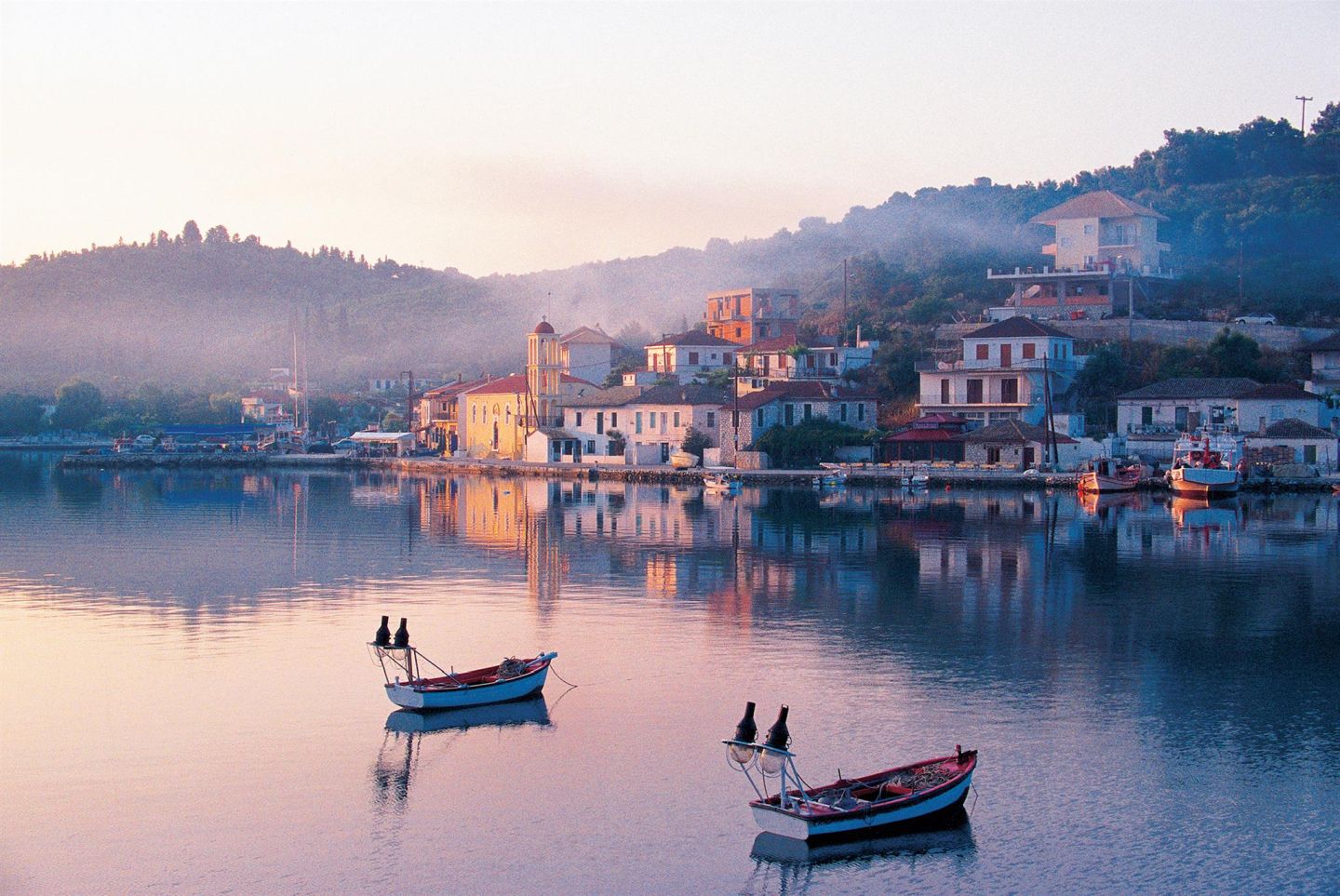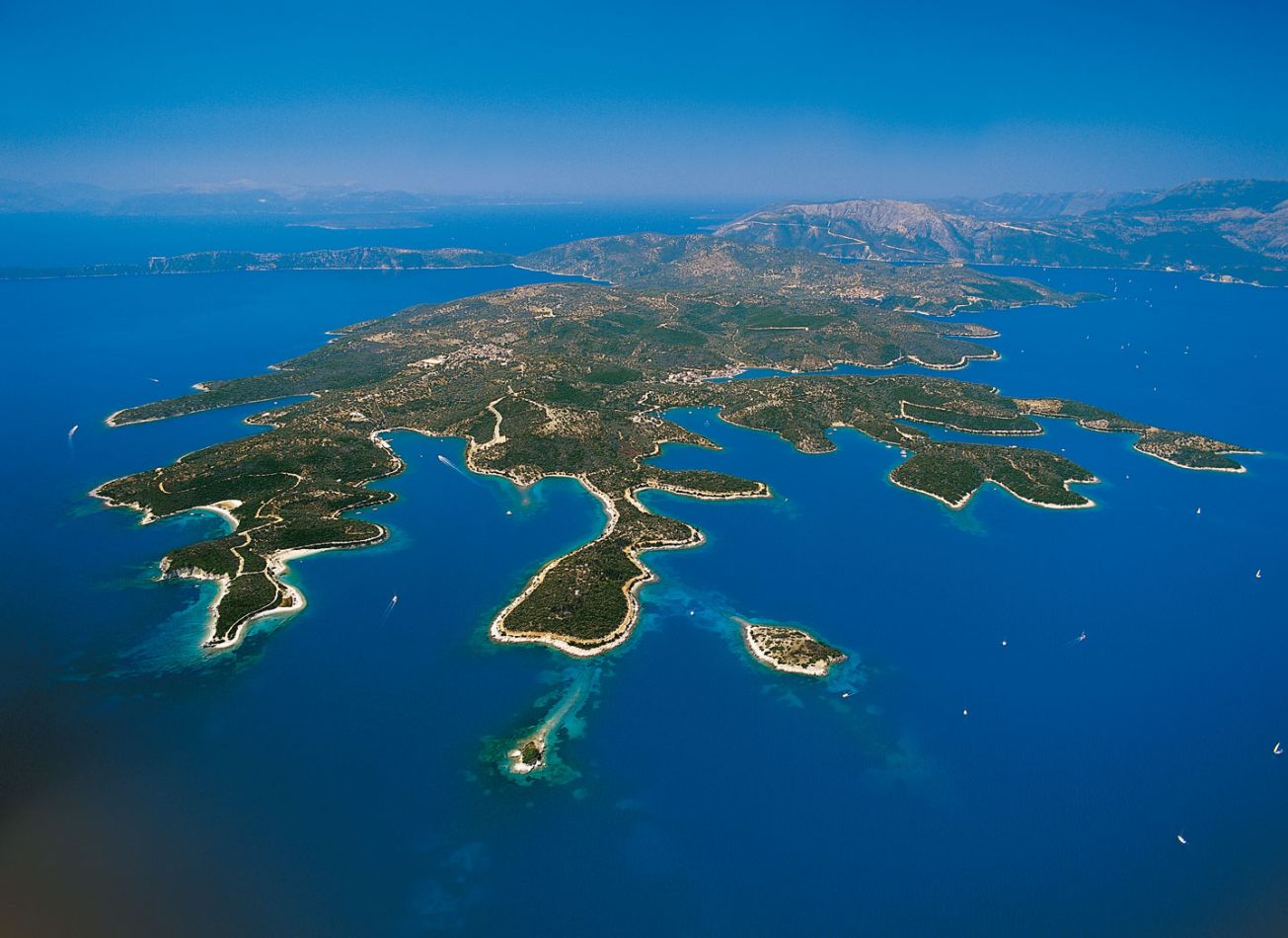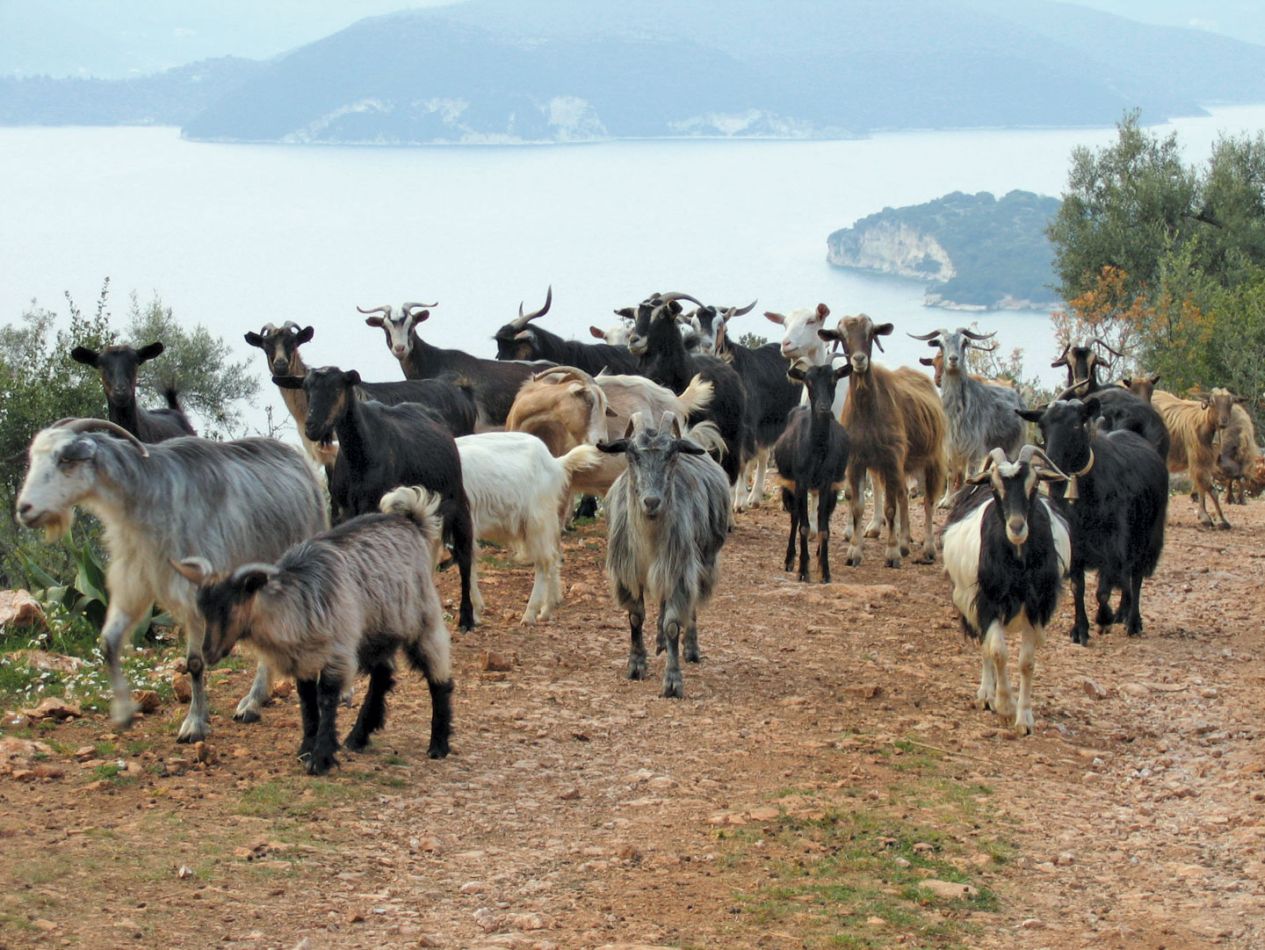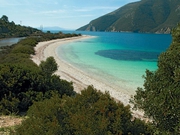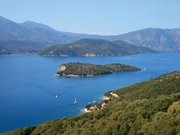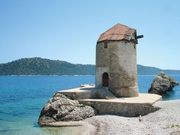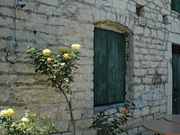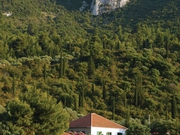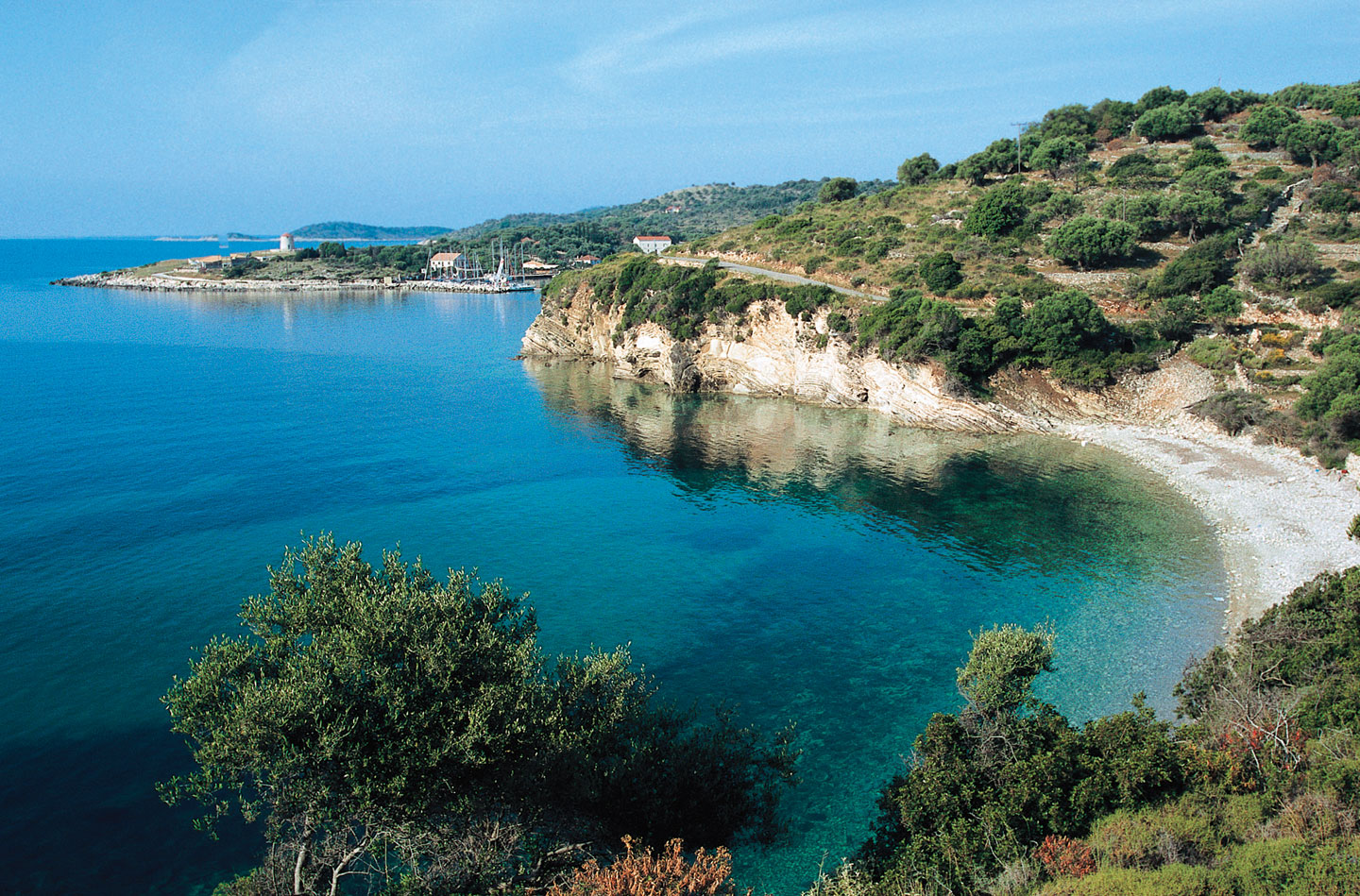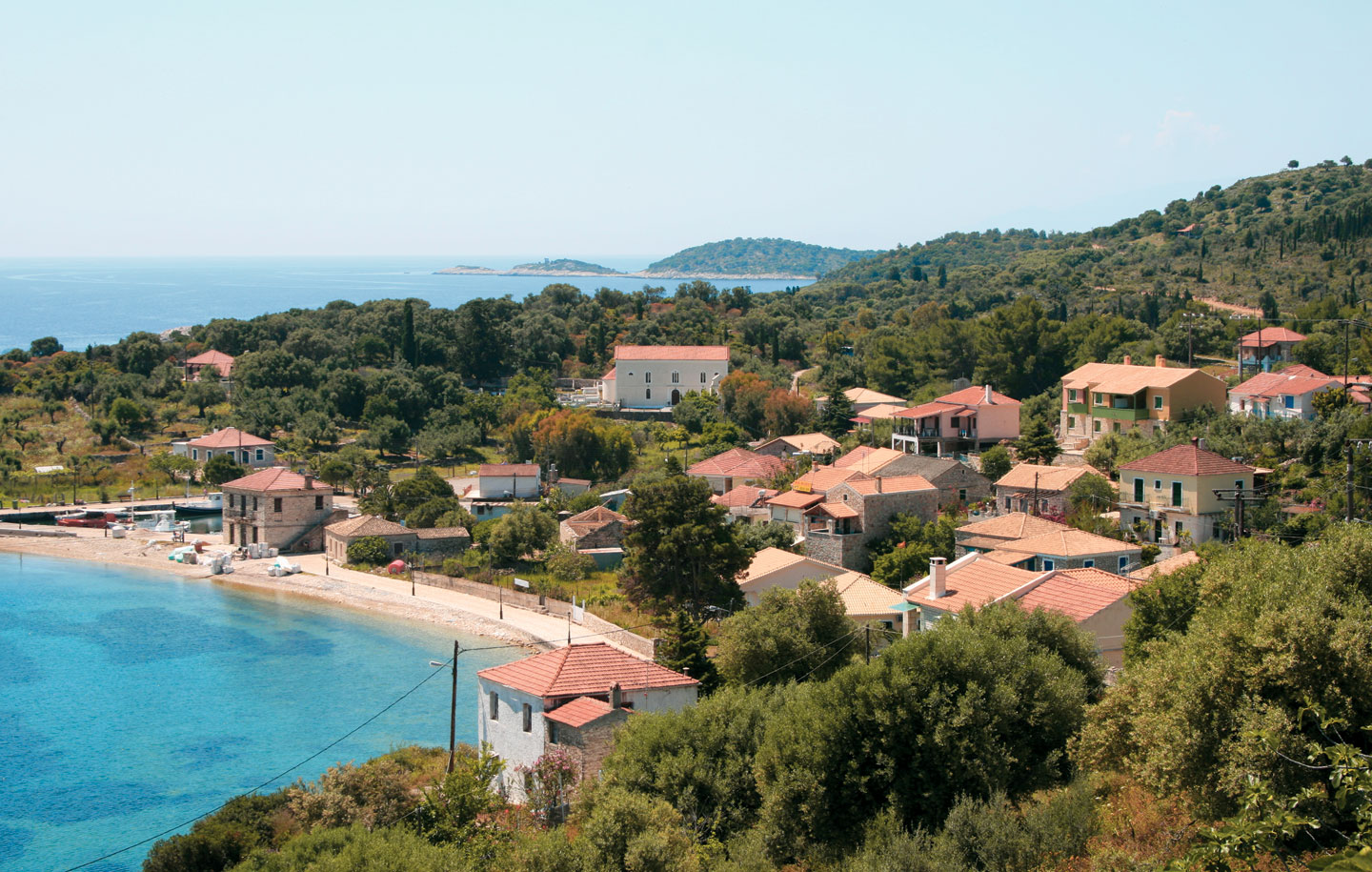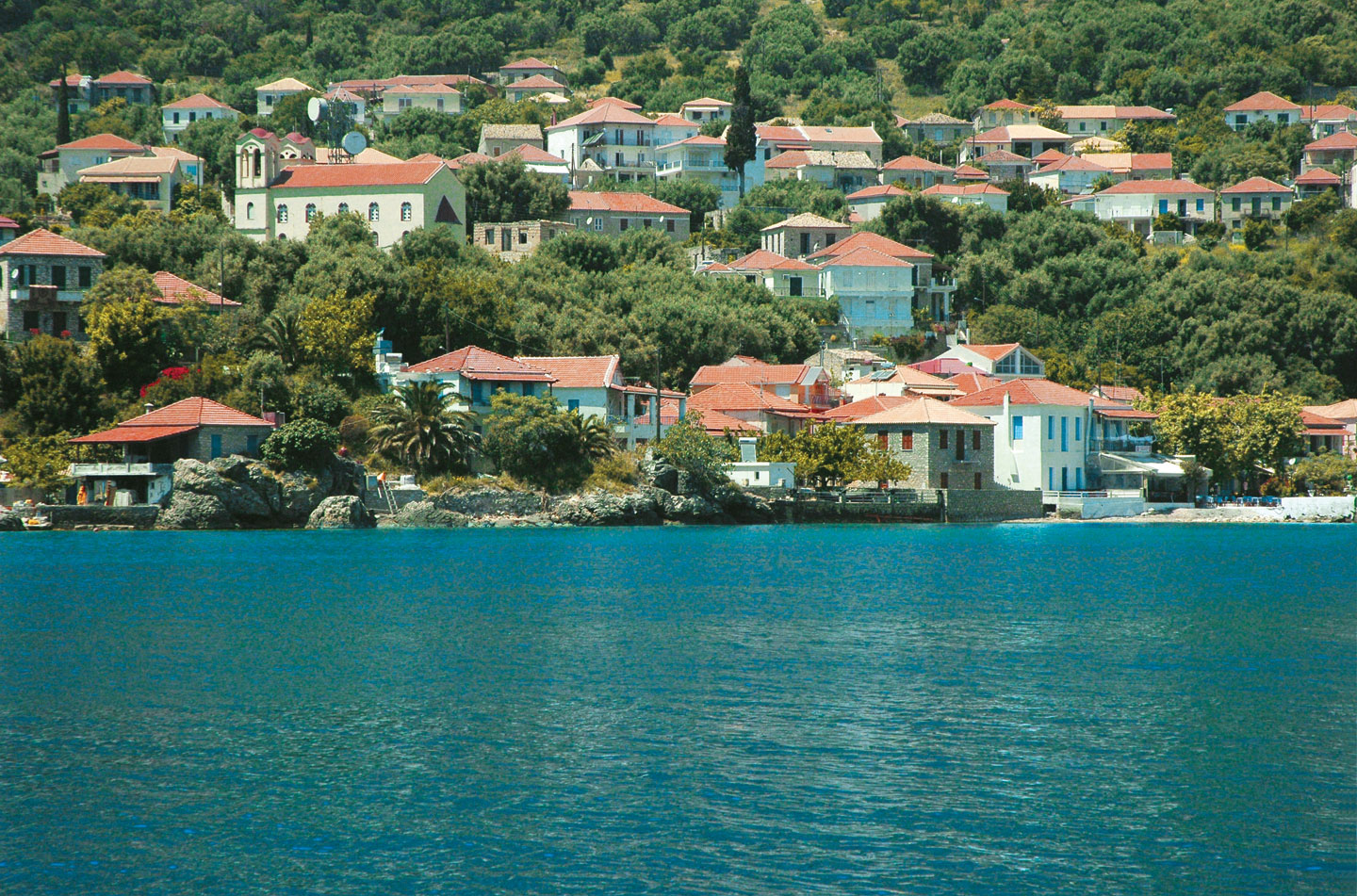
Surface area 20 sq km, the configuration is an unusual mixture of vegetation and rocky outcrops. It is full of every kind of plant: arbutus, bay, olive trees, holm-oak and the famous maritime pine trees which grow amongst the rocks and extend down to the sea. The island’s permanent inhabitants number less than 600.
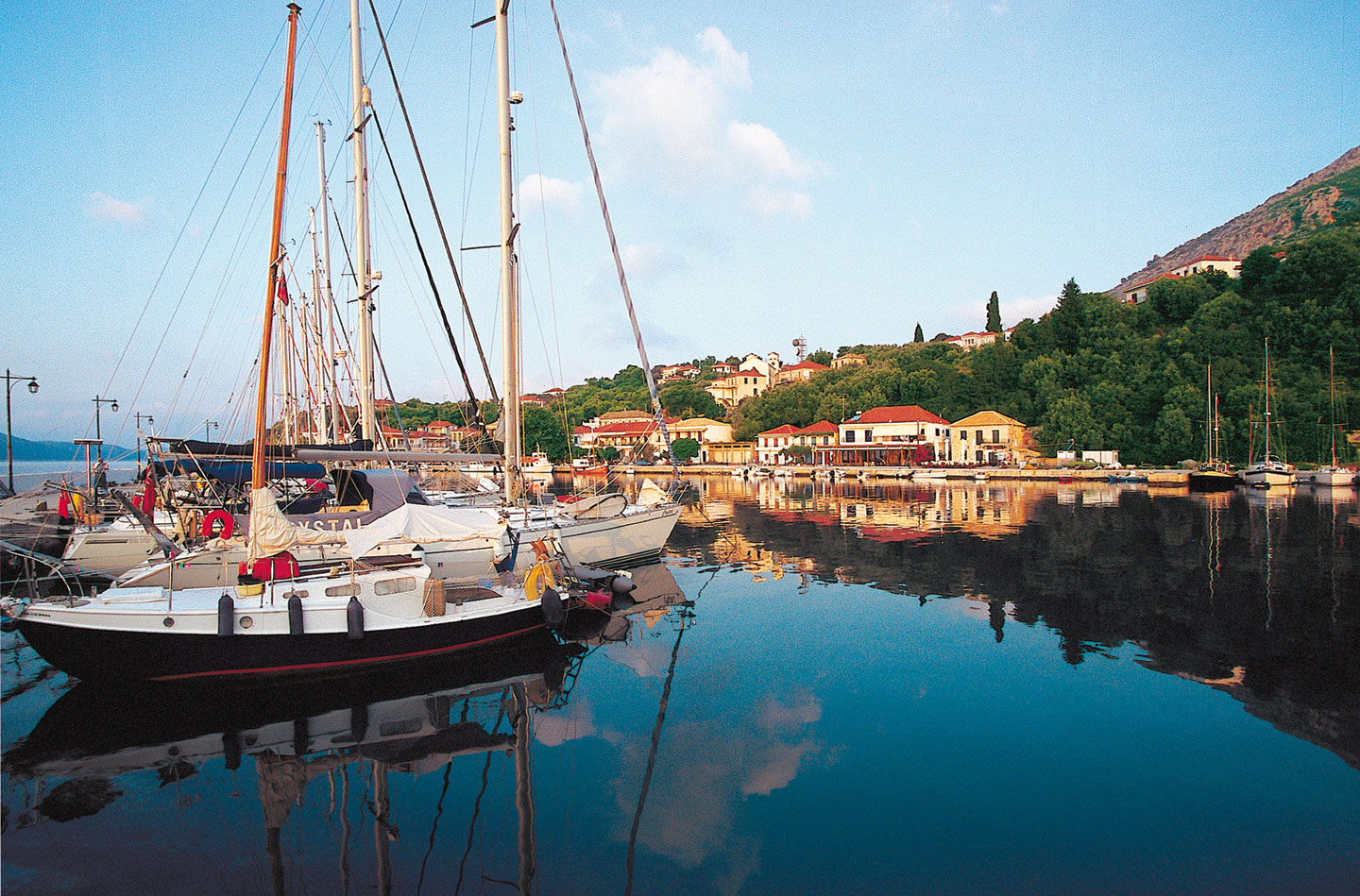
There are four hamlets on the island: Kalamos, Episkopi, Kastro and Kefali and its highest peak is Vouni. Kalamos itself is the picturesque harbour for all sorts of craft, built in a crescent on the side of Vouni. Its stone houses with tiled roofs practically touch one another, leaving just enough space between them for cobbled alleys. The road to Episkopi, which starts at Kalamos, passes through a dense pine forest; it is the second smallest cluster of houses on the island where time seems to have stopped in 1960. There are a few summer houses and a small harbour for boats and caiques. Mt Mytikas in Aitoloakarnania is only 10 minutes away by sea.
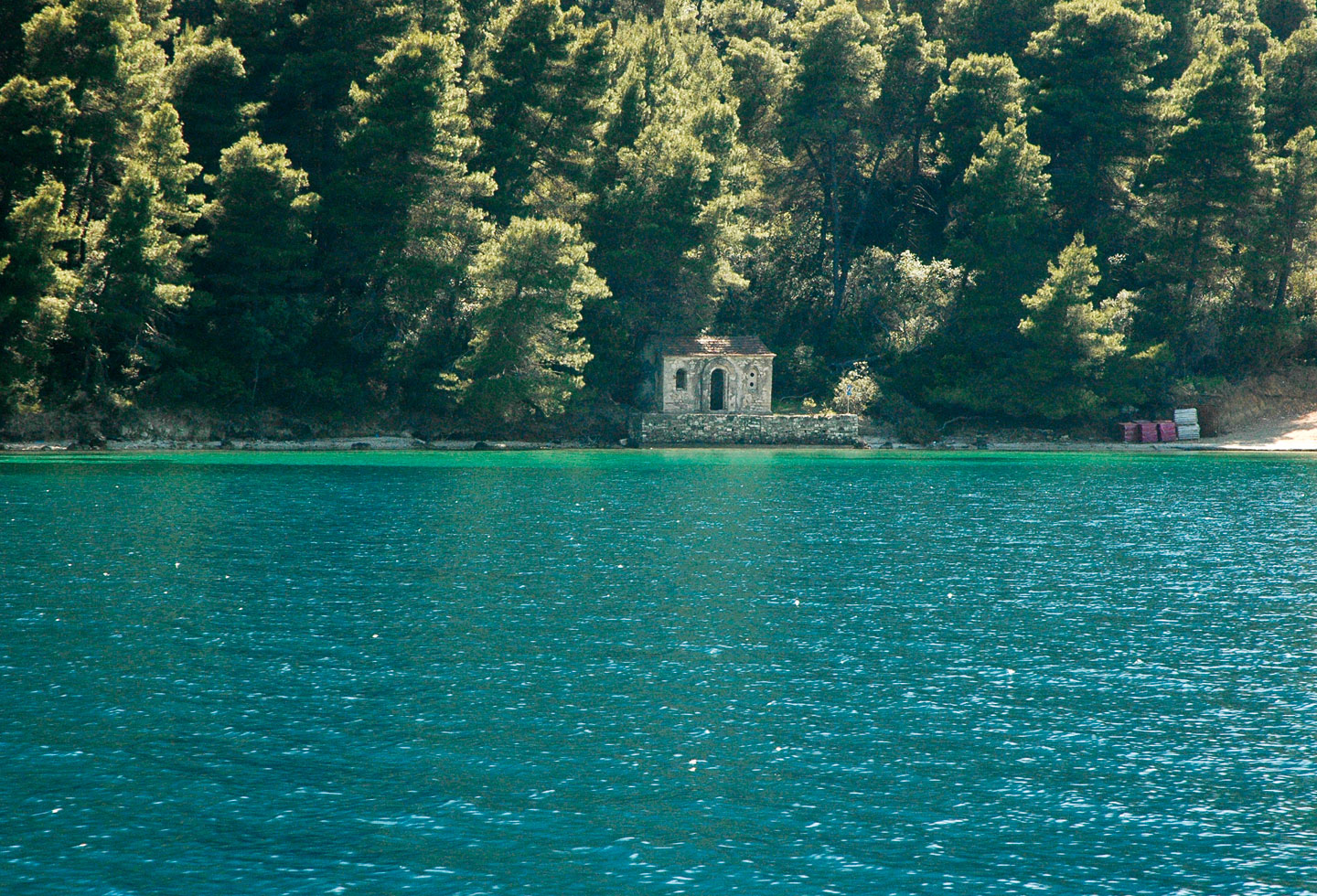
On the route from Kalamos to Episkopi – ideal for hiking – you can make a stop at the small beach of Agios Konstantinos with the church of Agios Donatos (a saint worshipped only in the Ionian Islands). Close to Episkopi, there is the cluster of houses called Kastro with its fortress monastery tucked into trees, possibly dating to the Byzantine era.
Other places worth seeing on the island: chalasma, a niche in the rock on the south side, another of the hiding-places for the submarine Papanikolis in World War II; the islet of Fermekoula in the south-west, which is visited by the monachus monachus seals and the old church of Agios Ioannis and chapel of Agios Konstantinos by the lighthouse.
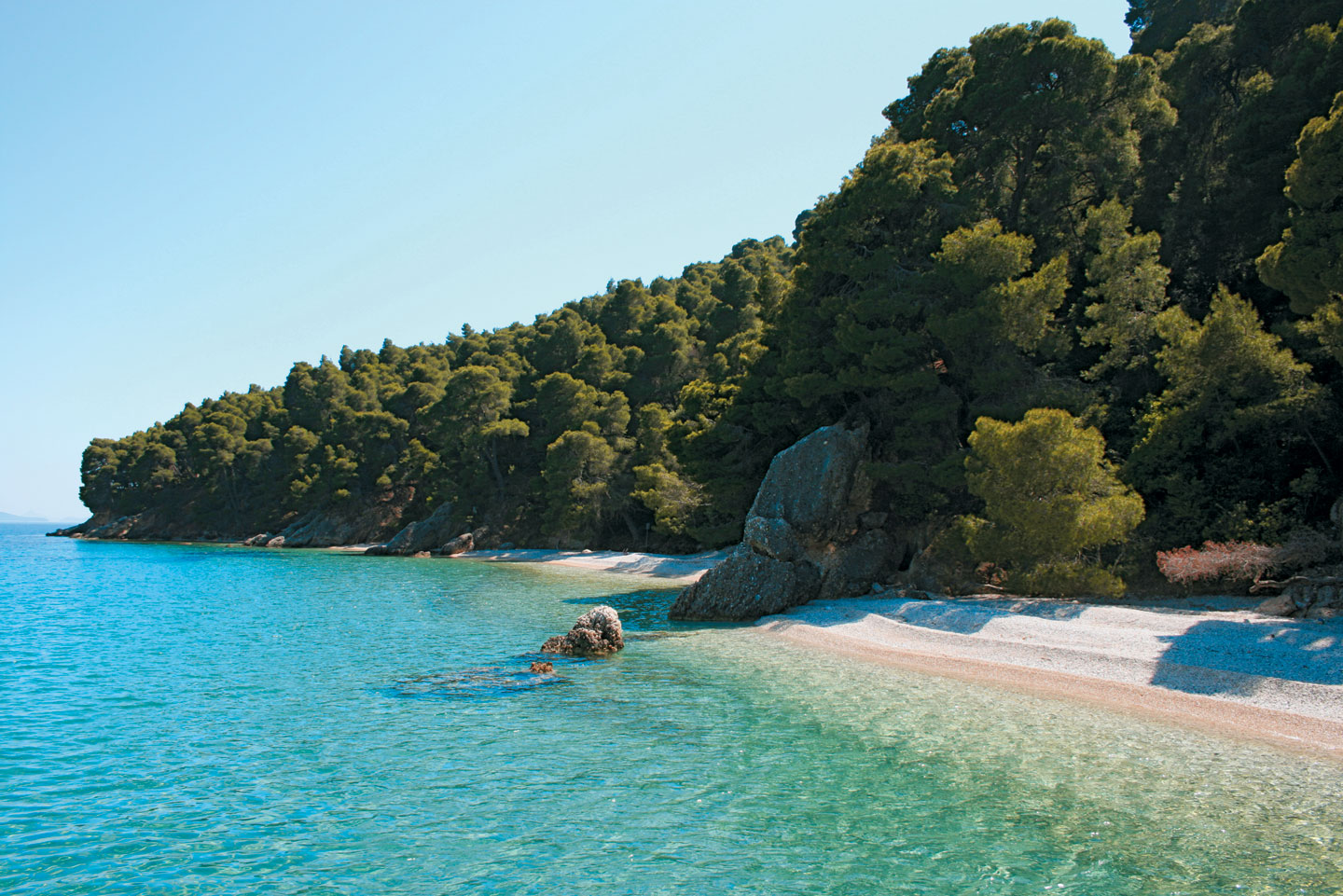
The Kalamos beaches, mainly accessible from the sea, are Myrtia, Asprogiiali, Agriapidia, Pefki, Kefali with its old hamlet, Kedros, Alexaki, Kipoi and Trachilos; whilst circumnavivgating the island, look out for the caves which are also very interesting.
